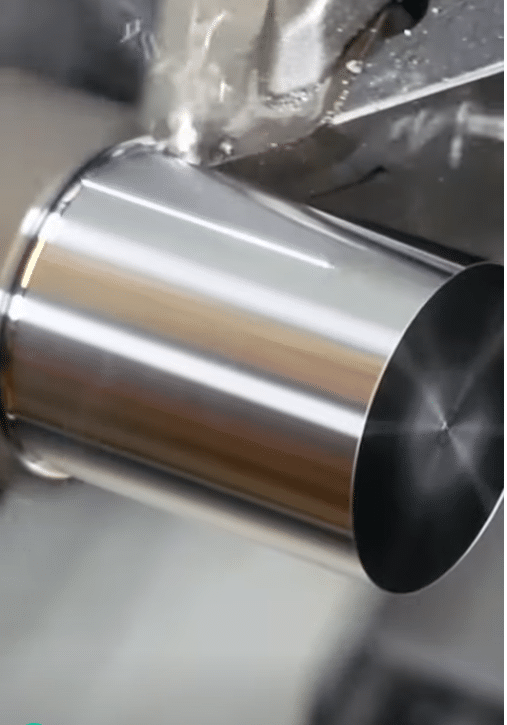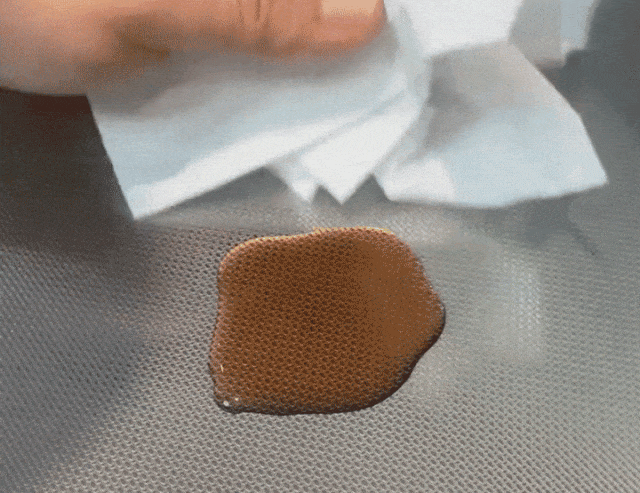An introduction to stainless steel plates – Daxun
Stainless Steel Plate: The Sturdy Foundation of Modern Industry
In modern industrial and construction fields, stainless steel plates have become an indispensable material due to their outstanding performance and versatility. Proper fabrication and welding techniques for stainless steel components are crucial to maintain their corrosion resistance and mechanical properties. From the structures of skyscrapers to precision medical devices, stainless steel plates provide designers and engineers with infinite creative possibilities with their unique corrosion resistance, aesthetic appearance, and durable properties.
What is Stainless Steel?
Stainless steel is a remarkable alloy known for its exceptional corrosion resistance and distinctive shine. Comprising a minimum of 10.5% chromium by weight, this alloy forms a thin, protective oxide layer on its surface, which prevents rusting and enhances its durability. Often referred to as inox or corrosion-resistant steel (CRES), stainless steel is an iron-based alloy that stands out for its ability to resist rust and corrosion. This unique property makes it an ideal choice for a wide range of applications, from household items to industrial machinery, ensuring longevity and reliability in various environments.
Composition and Properties of Stainless Steels
Stainless steels are a diverse family of iron-based alloys known for their impressive corrosion and heat resistance. At the core of their composition is a minimum of 12% chromium, which significantly enhances their corrosion resistance. The addition of nickel further improves both corrosion resistance and fabricating characteristics, making these alloys highly versatile. Other crucial elements such as molybdenum, titanium, and nitrogen are often included to enhance specific properties. Stainless steels are categorized into three primary groups based on their composition and metallurgical characteristics: austenitic stainless steels, ferritic stainless steels, and martensitic stainless steels. Additionally, duplex stainless steels, which combine the features of austenitic and ferritic structures, offer a balanced mix of strength and corrosion resistance, making them suitable for demanding applications.

Types of Stainless Steel Plates
Stainless steel plates are mainly divided into three categories: austenitic stainless steel, ferritic stainless steel, and martensitic stainless steel. Each type has specific chemical compositions and performance characteristics suitable for different applications. Understanding the specific stainless steel grade is crucial for selecting the right material for different applications. The significance of various stainless steel grades lies in ensuring durability and optimal performance for specific applications.
- Austenitic Stainless Steel: With high nickel and chromium content, it has good corrosion resistance and toughness, making it the most commonly used stainless steel.
- Ferritic Stainless Steel: With lower chromium content, it is more cost-effective, but has lower corrosion resistance compared to austenitic stainless steel.
- Martensitic Stainless Steel: With higher carbon and lower chromium content, it has good hardness and strength but poor corrosion resistance. Martensitic stainless steels, such as grade 440, have moderate corrosion resistance, making them suitable for applications like knife blades and oil or gas parts.
Production Process of Stainless Steel Plates
The production process of stainless steel plates typically includes the following steps:
- Melting: Melting iron ore, chromium, nickel, and other raw materials at high temperatures to produce molten steel. Austenitic stainless steels, which account for about two-thirds of the stainless steel produced, are prevalent in the food industry due to their enhanced corrosion resistance and fabricating properties.
- Continuous Casting: Casting molten steel into steel billets through a continuous casting machine.
- Hot Rolling: Heating the steel billets and rolling them into thick plates using a rolling mill.
- Cold Rolling: Further rolling the hot-rolled plates to the desired thickness at room temperature.
- Annealing: Heat-treating the cold-rolled plates to relieve internal stress and improve performance.
- Surface Treatment: Polishing, brushing, or other surface treatments as needed.
Advantages of Stainless Steel Plates
Stainless steel plates have several key advantages:
- Corrosion Resistance: The passivation film on the surface of stainless steel plates effectively resists various corrosive media, including acids, alkalis, and salt solutions. Certain stainless steel grades, such as grade 2205, are engineered to resist crevice corrosion, especially in industries like oil and gas.
- Aesthetic Appeal: The smooth surface of stainless steel plates is easy to clean and maintains a long-lasting luster.
- Strength and Durability: Stainless steel plates have high strength and good toughness, able to withstand extreme conditions. Some stainless steel grades are designed to resist stress corrosion cracking, particularly under tensile stress and elevated temperatures.
- Malleability: Stainless steel plates can be processed into various shapes and sizes through cutting, bending, welding, and other methods.
- Hygiene: Stainless steel plates are resistant to bacterial growth, making them ideal for food processing and medical industries.
Applications of Stainless Steel Plates
Stainless steel plates are used in almost all industrial sectors, including but not limited to:
- Construction: Used for making curtain walls, roofs, railings, elevators, etc., enhancing the appearance and durability of buildings.
- Chemical Industry: Used for manufacturing reactors, storage tanks, pipelines, and other corrosion-resistant equipment. Selecting the right stainless steel alloy, such as austenitic steels, is crucial for optimal performance in chemical processing environments.
- Food Processing: Used for making food-contact surfaces, processing equipment, and packaging materials. Austenitic steels are preferred due to their excellent corrosion resistance and performance in various environments.
- Medical Industry: Used for manufacturing surgical instruments, medical devices, and laboratory equipment.
- Transportation: Used for making structural components of cars, trains, ships, and aircraft.
- Energy Industry: Used for manufacturing wind turbines, solar panel frames, and nuclear power plant equipment.

Applications in Specific Industries
Food and Beverage Industry
In the food and beverage industry, stainless steel is indispensable due to its superior corrosion resistance, durability, and ease of cleaning. It is extensively used in manufacturing equipment such as tanks, pipes, and utensils, as well as in cookware and cutlery. The material’s ability to withstand harsh cleaning agents and its non-reactive nature make it ideal for maintaining hygiene standards. Regulatory bodies, including the FDA, have established guidelines to ensure the safe use of stainless steel in food processing equipment, underscoring its importance in this sector.
Medical Industry
The medical industry relies heavily on stainless steel for a variety of critical applications. Its corrosion resistance, strength, and biocompatibility make it an ideal material for surgical instruments, implants, and medical equipment. Stainless steel’s ability to endure the corrosive environment of the human body makes it a preferred choice for medical implants, such as hip and knee replacements. Its use in medical devices ensures reliability and safety, contributing to better patient outcomes.
Construction and Architecture
Stainless steel is a favored material in construction and architecture due to its corrosion resistance, strength, and aesthetic appeal. It is commonly used in building facades, handrails, and other decorative features, adding both functionality and visual appeal to structures. In structural applications, such as beams and columns, stainless steel’s high strength-to-weight ratio offers significant advantages. The use of stainless steel in construction is governed by standards and guidelines, such as those from the American Society for Testing and Materials (ASTM), ensuring its performance and safety in various architectural projects.
By following this structured approach, the new sections will integrate smoothly into the existing article, providing readers with a comprehensive understanding of stainless steel plates and their applications.
Maintenance and Care of Stainless Steel Plates
To maintain the performance and appearance of stainless steel plates, regular maintenance and care are required. This includes cleaning the surface with mild detergents, avoiding chlorine-containing cleaners, and regularly inspecting and repairing surface scratches or damages.
Conclusion
With its outstanding performance and wide range of applications, stainless steel plates have become an indispensable material in modern industrial and construction fields. As technology continues to advance and innovate, stainless steel plates will continue to play an important role in our lives, providing us with more robust and aesthetically pleasing solutions for the future.
About the surface of stainless steel plate
There are various surface treatment methods for stainless steel plates, each of which can give different appearance and performance characteristics to the stainless steel plate. Here are some common types of surface treatments:
- 2B surface: This is one of the most common surface treatments for stainless steel plates, usually done after cold rolling. The 2B surface has a slight matte effect, a smooth surface, but no gloss.
- BA surface (Bright Annealed): Stainless steel plate treated with bright annealing, with high gloss and smooth surface.
- No.3 surface: This is a medium-grit surface, usually processed with 100-120 grit abrasives, with good scratch resistance.
- No.4 surface: This is a fine-grit surface, processed with 150-180 grit abrasives, with a slight texture that can hide fingerprints and stains.
- HL surface (Hairline): Also known as a hairline surface, this is a surface with long stripe patterns, usually processed with 180-320 grit abrasives, with a modern and decorative feel.
- No.8 surface (Mirror): This surface treatment gives the stainless steel plate a high gloss effect similar to a mirror, usually used for decorative purposes.
- Brushed surface: This is a surface with parallel line textures, which can be straight or cross-hatched, varying depending on the abrasive and processing direction.
- Sand Blasted surface: Through sand blasting, a uniform matte effect is formed on the stainless steel plate surface, which can hide surface defects and provide good corrosion resistance.
- Etched surface: Etching patterns or text on the stainless steel plate surface through chemical or electrochemical methods, commonly used for decoration and personalized design.
- PVD coating surface: Coating a thin film on the stainless steel plate through physical vapor deposition technology, which can change its color and increase wear resistance.
- Embossed surface: Printing various patterns on the stainless steel plate surface to enhance the decorative effect.
- Colored surface: Forming various colors on the stainless steel plate surface through electrolytic coloring or other surface coloring techniques for decorative purposes.
These surface treatments can be selected according to different application requirements, whether to improve corrosion resistance, enhance decorative effects, or meet specific functional requirements.
About the material of stainless steel plate
The materials of stainless steel plates mainly include the following:
Understanding the specific stainless steel grade is crucial for selecting the right material for different applications. The significance of various stainless steel grades lies in ensuring durability and optimal performance for specific applications.
Austenitic stainless steel:
The main components include iron, chromium, nickel, and may contain elements such as manganese, molybdenum, and titanium. Austenitic steels are known for their excellent toughness, weldability, and performance in various environments.
The most common austenitic stainless steels are 304 and 316, of which 304 stainless steel is the most widely used type of stainless steel, while 316 stainless steel contains more molybdenum and has better corrosion resistance.
Ferritic stainless steel:
The main components include iron and chromium, usually containing 10.5% to 27% chromium.
The typical representative of ferritic stainless steel is 430 stainless steel, which has good corrosion resistance and thermal stability.
Martensitic stainless steel:
The main components include iron, chromium, carbon, and may contain elements such as nickel and molybdenum.
The typical representative of martensitic stainless steel is 410 stainless steel, which has higher strength and hardness, but relatively poor corrosion resistance.
Duplex Stainless Steel:
Combines the characteristics of austenitic and ferritic stainless steels, with good corrosion resistance and mechanical properties. A typical representative of duplex stainless steel is 2205 stainless steel, which contains about 22% chromium and 3% nickel.
Precipitation Hardening Stainless Steel:
The hardness and strength can be significantly improved by heat treatment. Typical precipitation hardening stainless steels include 17-4 PH and 17-7 PH stainless steels. Each material of stainless steel plate has its specific application field, and is selected based on the required corrosion resistance, strength, toughness and cost.

